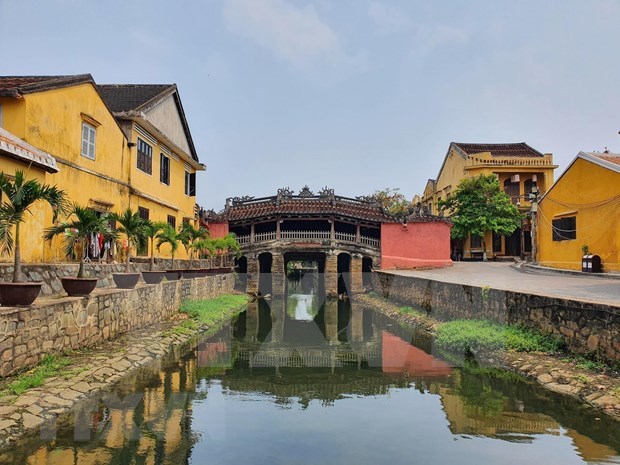Hoi An's Cau Pagoda to complete restoration in 2023
PSNews - The restoration work of Hoi An's Cau Pagoda is expected to complete in 2023 with the total cost of 20.3 billion VND (nearly 861,000 USD).

The Hoi An Municipal People’s Committee in the central province of Quang Nam on December 28 started work to restore Cau (Bridge) Pagoda - an iconic tourist attraction of the ancient city.
As approved, the restoration work includes reinforcing the foundation system, abutments, and piers; repairing the floor system, wooden frame, and roof; renovating electrical system, termite treatment; digitalising relics using 3D technology for archiving and restoration work; organising seminars; making scientific records; embellishing landscape; and improving technical infrastructure and security camera system.
All the preparations were studied, reviewed, and agreed upon by the Ministry of Culture, Sports and Tourism, the Department of Cultural Heritage, Quang Nam provincial Department of Culture, Sports and Tourism, the provincial Department of Construction, the UNESCO Office in Hanoi, the Japan International Cooperation Agency (JICA), and the Japan General Administration of Culture before they submit the dossiers on the work to competent agencies for appraisal and approval.
The restoration work is expected to complete by the end of 2023. The pagoda was renovated many times in the past.
The pagoda was originally built by Japanese tradesmen in the 17th century.
It was not until 1653 that a tile-roofed structure was erected, connecting to the northern railings, protruding between the bridge, that’s why local people often call the covered bridge Chua Cau (Bridge Pagoda).
Although it is a pagoda, it is not worshipping the Buddha like other typical pagodas in Vietnam, but a spirit that protects and brings happiness to the local people.
As reported, the central province of Quang Nam targets building Hoi An city into its development locomotive and a world-class tourism hub of the country by 2030.
Accordingly, between now and 2025, Hoi An will have the same criteria for a grade II city with a minimum population of 200,000, at least 65% of workers in non-agriculture, and meet requirements for landscaping, urban and technical infrastructure.
The city will basically complete the construction of a smart urban area that synchronously connects with the province’s smart urban area and the country's smart urban area network, and join the global network of creative cities.

